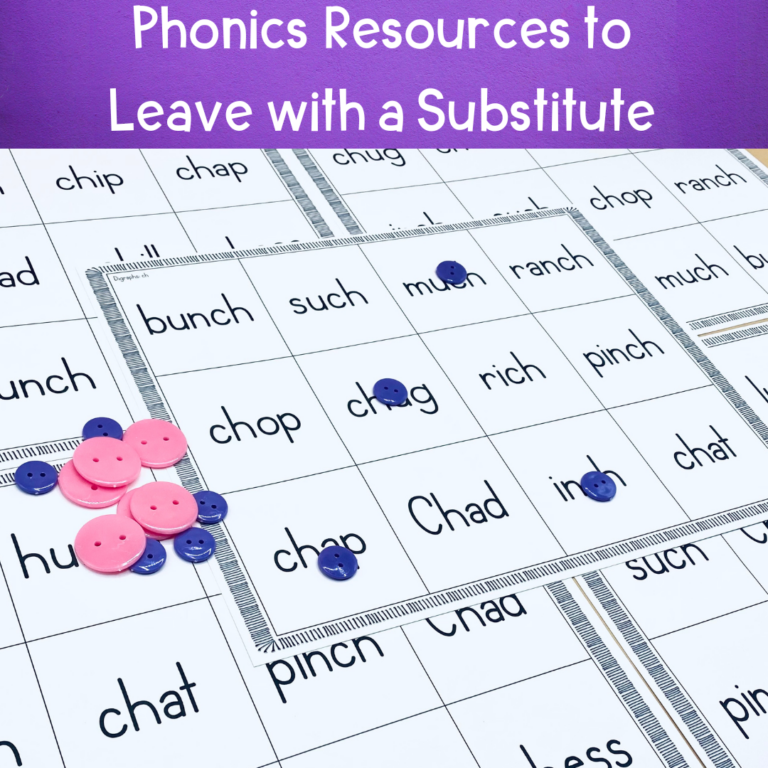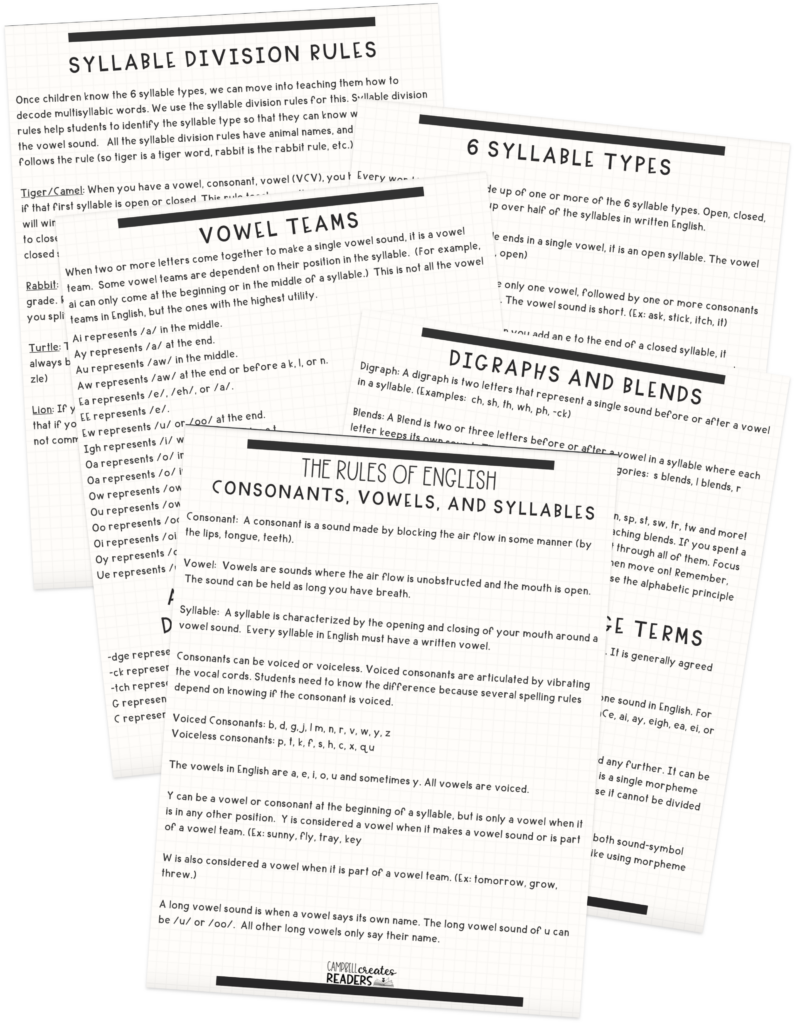
Share This:
In 1997, the National Reading Panel was convened at the behest of Congress and the Secretary of Education. It was gathered in order to “assess the status of research-based knowledge, including the effectiveness of various approaches to teaching children to read”(National Reading Panel, 2000, p.1-1). In 2000, the National Reading Panel (NRP) released their report, a document free to the public. The document is over 400 pages, but gives insights into what research suggests concerning key topics in education.
The National Reading Panel is critical because of the size of the meta-analysis they conducted. Thousands and thousands of research articles were screened, then hundreds were read and analyzed for this report. Since the Report was released in 2000, there has been nothing since that significantly challenges the findings of the panel.
I’ll be honest, it’s a lot to read. But that’s why I’m here! Knowledge is power, and I hope to aim you with the knowledge of the National Reading Panel, without having to read the entire document. Today, we will talk specifically about what the National Reading Panel has to say about phonemic awareness.

When discussing effect sizes, keep the following numbers in mind. An effect size of 0 means the “treatment and control group means were identical, revealing that training had no effect”(National Reading Panel, 2000, p.2-3). 0.2 is considered a small effect size, 0.5 is considered moderate, and 0.8 is a large effect size.
The overall effect size for phonemic awareness was .86, which is a large effect size. Kindergarten had the highest effect size at .95, first grade was .48, and 2nd-6th grade was .70. Overall, the evidence is clear that phonemic awareness instruction is very effective.
The National Reading Panel found that phonemic awareness instruction “helped all types of children improve their reading, including normally developing readers, children at risk for future reading problems, disabled readers, preschoolers, kindergartners, 1st graders, children in 2nd through 6th grades (most of whom were disabled readers), children across various SES levels, and children learning to read in English as well as in other languages”(p. 2-5). Simply put, phonemic awareness instruction can benefit everyone.

We know that overall, phonemic awareness has a strong impact. But it’s not just about developing phonemic awareness—we need to know if that translates into improved reading and spelling. Our end goal is not phonemic awareness, but proficient reading and spelling. Phonemic awareness instruction had a moderate effect size in both reading and spelling at .53 and .59, respectively.
So what does this mean? This means that instruction in phonemic awareness can improve both reading and spelling for our students. This is powerful knowledge, especially because phonemic awareness instruction does not have to last long! In fact, the biggest effect size came from studies where phonemic awareness instruction lasted less than 20 hours!
There is one caveat to this: phonemic awareness instruction does not improve spelling for older students with disabilities. It does, however, have a positive impact on their phonemic awareness and reading abilities.
Let me start by saying this: yes, once we add letters we are doing a phonics activity. Phonemic awareness is a skill where we are able to manipulate individual sounds. That being said, a phonics activity CAN strengthen phonemic awareness. The data doesn’t lie.

If your end goal is phonemic awareness, then it really doesn’t matter if you incorporate letters or not. The effect size with letters is .89 and the effect size without letters is .82. But as teachers phonemic awareness should never be our end goal. Our end goal will always be proficient readers and spellers.
Looking at reading and spelling outcomes, there is a clear answer: teaching phonemic awareness with letters has a much higher effect size. In studies where children manipulated letters as part of their phonemic awareness instruction, the effect size on reading outcomes was .59. Those that did not use letters had an effect size of .36. The effect of using letters is almost double that of not using letters when it comes to reading! The data is similar with spelling. Using letters produced an effect size of .61 for spelling outcomes. Without letters, the effect size was .34.
This section is not intended to spark a debate about phonemic awareness terms. Yes, once you add letters it is phonics. But the data is very, very clear—adding letters to phonemic awareness instruction improves phonemic awareness! Even if the task itself is a phonics task, we are strengthening the phonemic awareness skill.

There are a variety of phonemic awareness activities that can be done with students: segmenting, blending, deleting, substituting, and adding. But how many should we teach at once? According to the studies examined by the National Reading Panel, the strongest effect size occurred when 1 or 2 skills were utilized.
When looking at reading outcomes, one skill taught had an effect size of .71, 2 skills had an effect size of .79, and 3 skills had an effect size of .27. That means that teaching just one or two skills had MORE THAN DOUBLE the effect size of teaching 3 or more. Honestly, that’s a relief. This means we can do better by doing less! Yes, please!
The results are similar when looking at spelling outcomes. 1 skill taught had an effect size of .74, two skills was .87, and 3 or more skills was .23. Once again, 1 or 2 skills had more than double the effect over multiple skills.
If you have a phonemic awareness curriculum that teaches many skills, you do not have to throw it out! I’ve written about some of the hot-button issues in phonemic awareness. There is a lot of value to a phonemic awareness curriculum, but we may need to tweak it slightly to better align with research!
The National Reading Panel was created in 1997, and their report was published in 2000. Despite over 20 years passing, the data is very relevant today. But, can we trust it?
The answer is yes. Each subgroup reported on their methodology. This isn’t the most thrilling aspect of the National Reading Panel (maybe it’s just me because I got that A- in my educational research class and it ruined my 4.0 GPA), but it IS important to know if we can trust the work.
The National Reading Panel searched for articles in ERIC and PsychINFO. The articles were limited to journals written in English (although the studies did not have to be in English.) There was no limit on publication year. All studies had to be in a peer-reviewed journal. Studies had to “test the hypothesis that instruction in phonemic awareness improves reading performance over alternative forms of instruction or no instruction”(p.2-2). Statistics had to be made available for which effect sizes could be calculated or estimated.
By using these parameters, the National Reading Panel was able to use 52 articles to conduct their meta-analysis. The National Reading Panel clearly laid out the methodology and used many articles to determine the results of their meta-analysis.
In conclusion, the National Reading Panel gives us some clear direction for instruction. Phonemic awareness instruction is critical. We should add letters whenever possible, and keep our instruction to 1-2 skills at a time. With these parameters in mind, do you feel more confident in teaching phonemic awareness?
Share This:

Savannah Campbell is a K-5 reading specialist. She has taught her entire 12-year teaching career at the school she went to as a child. She holds two master’s degrees in education from the College of William and Mary. Savannah is both Orton-Gillingham and LETRS trained. Her greatest hope in life is to allow all children to live the life they want by helping them to become literate individuals.

Savannah Campbell is a K-5 reading specialist. She has taught her entire 12-year teaching career at the school she went to as a child. She holds two master’s degrees in education from the College of William and Mary. Savannah is both Orton-Gillingham and LETRS trained. Her greatest hope in life is to allow all children to live the life they want by helping them to become literate individuals.
Feeling overwhelmed with all the terminology out there? Want to know the key terms all teachers need to teach phonics? In this FREE Rules of English cheat sheet, you get a 5 page pdf that takes you through the most important terms for understanding English—you’ll learn about digraphs, blends, syllable types, syllable divisions, and move. Grab today and take the stress out of your phonics prep!
